Sealants for joint sealing
TEROSON’s consulting and service packages round off the product profile to ensure that any bonding and sealing in any façade and around windows can be mastered safely.
Frequent areas of application for sealants and joint sealants
Facade and glazing
TEROSON SE 108xlt, for example, is a neutral-curing silicone with a mold-inhibiting fungicide and 25% permissible total deformation, which is also suitable for sanitary applications.
Windows and doors
Both acrylic sealant and silicone sealant are used indoors and outdoors to seal windows and doors. In conjunction with joint sealing tapes, the sealant serves as protection against driving rain, draughts, noise and therefore also heat loss. TEROSON SE 139 is a proven, highly elastic acrylic sealant that is used in many other construction applications in addition to the connection joint. Including heating, ventilation and air conditioning systems.
Masonry
In addition to the sealant, the choice of suitable sealing film plays a decisive role depending on the application. TEROSON Bautechnik offers a wide range of sealing films, sealing tapes and sealants for facade connections, the application of which is described with detailed images in the TEROSON Profi-Guide. The TEROSON Profi-Guide is available free of charge.
The difference between elastic
and plastic sealants
A distinction is made between elastic and plastic sealants. Plastoelastic and elastoplastic sealants are located in between, but overall every sealant has both plastic and elastic properties, meaning that the classification transitions are fluid.
Elastic sealants
If the sealant remains relatively soft after curing, it is an elastic sealant, as is the case with silicone. Wherever relative movements need to be compensated for, silicone is more likely to be used if the elasticity of acrylic is not sufficient. After a force is applied, the elastic sealant has the ability to deform back.
Plastic sealants
This sealant deforms irreversibly when force is applied in order to relieve the applied stress. Plasticity is desirable, e.g. for setting joints where the joint flanks can move against each other.
Acrylic joint sealants
The areas of application are e.g:
- Expansion joint in interior areas
- Connection joint in exterior and interior areas
- Masonry cracks in exterior areas
- Versatile use, e.g. on plaster, wood, glass, plasterboard, fiber cement
Properties:
- Can be painted over
- For indoor and outdoor use
- Water-permeable with increased moisture
- Some volume shrinkage during curing
- Elasto-plastic or elastic
TEROSON silicone-based sealants
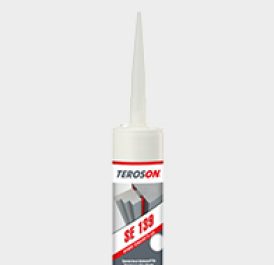
TEROSON SE 139
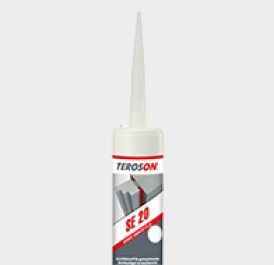
TEROSON SE 20
Silicone joint sealants
Properties:
- Water-repellent
- Permanently elastic
- No volume shrinkage during curing
- Fungus-inhibiting effect
- Dimensionally stable
The areas of application are e.g:
- Sanitary area
- Window connection joint
- Joint sealant for facade elements
- Glass sealing for wooden windows
TEROSON silicone-based sealants
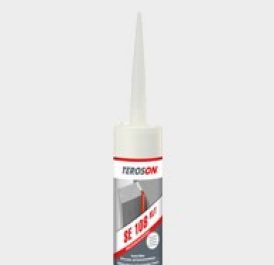
TEROSON SE 108XLT
MS polymer joint sealants
The MS polymer sealant is particularly characterized by the fact that the primer is already contained in the sealant, which saves one work step. MS polymer is primarily used for expansion and connection joints where primers are to be used and where wash-out must be avoided and/or overpainting (paint compatibility) must be possible.
Properties:
- Durably elastic
- Weather resistant
- Vibration tolerant
- Can be painted over
- High tear resistance
- Primer already contained in the sealant
- Very good adhesion
The areas of application are e.g:
- Facade elements in interior and exterior areas
- Air conditioning and ventilation technology
- Metal construction
- Gasket material for glazing
TEROSON MS polymer sealants
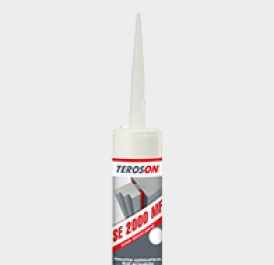
TEROSON SE 2000 MF
Rubber joint sealants
Properties:
- Good leveling properties
- Good adhesion even on non-polar substrates
- Can be painted over
- Contains solvent
- Resistant to weathering
- Very good adhesion to many substrates
- Adheres to most substrates without primer
- Very good mold resistance
- Also adheres to wet surfaces
The areas of application are e.g:
- Areas exposed to the weather
- Seams that are difficult to access
- Damp substrates
- Oily substrates
- Very suitable for bonding rubber, glass, steel, aluminum, felt and wood
TEROSON rubber-based sealants (solvent-based)
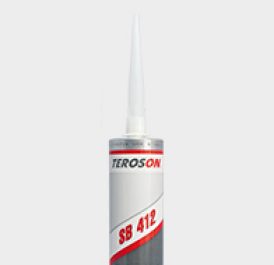
TEROSON SB 412
Joint sealing: the history of sealants
Humans have been sealing joints and cracks of all kinds or bonding one material to another since time immemorial. Over 100,000 years ago, Neanderthals used birch pitch to bond sharp stone arrowheads to the shaft to ensure hunting success. In ancient shipbuilding, pitch, tar and tree resins were used to seal the hull, known as caulking. Around 1700 AD, the breakthrough of modern sealants began with the use of natural rubber and research into window putty. Natural rubber was already being used around 1600 BC by indigenous peoples in what is now South America, e.g. for rubber balls, the most important utensil in Mesoamerican ball games.
In Europe, it was the physicist J. A. C. Charles who used rubber to seal textiles in 1783, from which the Montgolfier brothers’ first hot air balloon was made, which successfully completed its maiden flight after 25 minutes.
From the 1930s to the 1960s, with the advent of polymer chemistry, many synthetic sealants based on silicone, polysulphide, polyurethane, isobutene-isoprene rubber and silane-modified polymers (SMP) were developed. There is no end in sight to the development of sealants and ecology and economy are playing an increasingly important role.
TEROSON can look back on more than 120 years of brand history and joined the Henkel Group in 1991. Being part of the global Henkel Group further increased research and development resources and TEROSON Bautechnik has now been a leader in the field of specialty sealants for facades and windows for 25 years.
This might also interest you
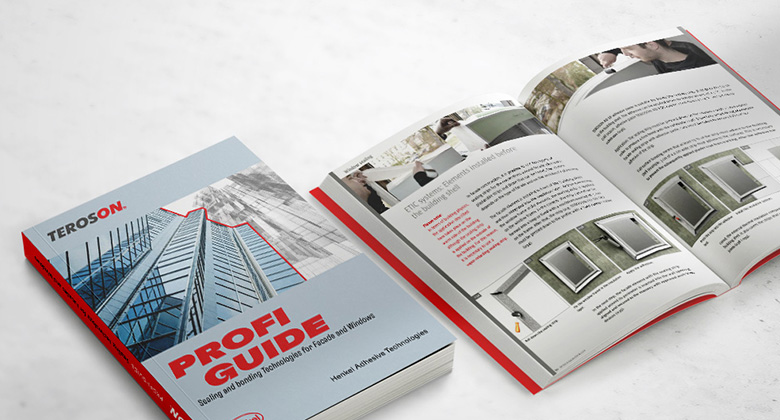
New TEROSON Profi Guide
The TEROSON Profi-Guide is the ultimate, easy-to-read reference work for waterproofing professionals.
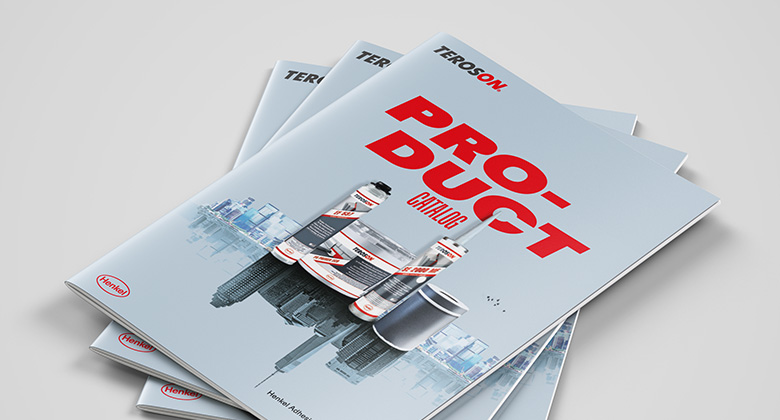
TEROSON product range
Download the TEROSON product programme and get detailed information about our products.
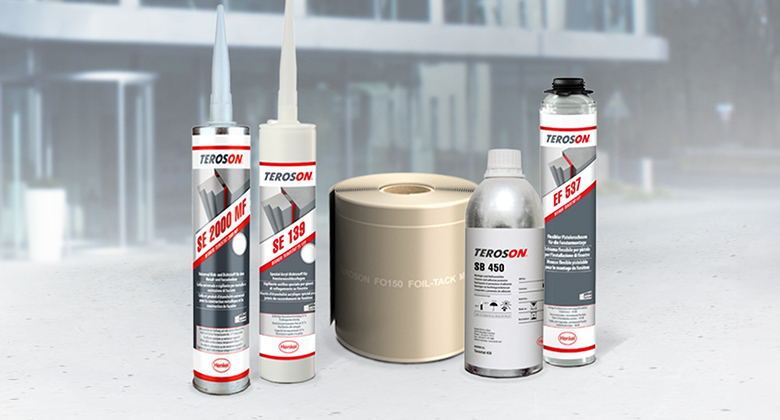
Products at a glance
From waterproofing to coating: Discover TEROSON's comprehensive range of products at a glance.
Do you need technical advice?
Our TEROSON team is at your disposal.
Get in touch with us!